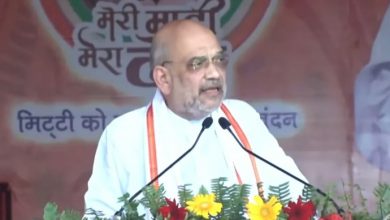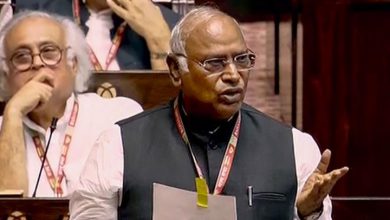
India’s Chandrayaan-3 is set to make history as it attempts to soft-land Vikram Lander with the Pragyaan rover in its belly near the moon’s south pole.The nation will experience one of its most painful twenty minutes on Wednesday, as the Vikram lander enters to attempt a gentle landing on the lunar surface in the evening.
India’s Chandrayaan-3 is set to make history as it attempts to soft-land Vikram Lander with the Pragyaan rover in its belly near the moon’s south pole. The last twenty minutes of his ride have been described as twenty minutes of horror that could have felt like the tight end of a T-20 game.
Chandrayaan-3’s landing process and path After a spectacular takeoff, ISRO’s Bahubali rocket or Mark-3 launch vehicle put Chandrayaan-3 into orbit. Chandrayaan-3 traveled many elliptical circles of the Earth to accelerate
On August 1, Chandrayaan-3 was propelled towards the moon in a journey of 3,84 lakh kilometers. On August 5, the Chandrayaan-3 satellite gently entered the moon’s orbit and stabilized. In lunar orbit, Chandrayaan-3 is stable for several days.
In an important and sophisticated maneuver, the Vikram propulsion module and lander along with the Pragyaan rover separated on August 17 – while the satellite was in an orbit of 153 km x 163 km. The Thrust Module continues its journey around the Moon in an orbit of 153 km x 163 km.
Soon, the Vikram lander was brought closer to the moon’s surface in a 134 km x 25 km elliptical orbit before the power landing could begin. So far, India has successfully carried out this process at Chandrayaan-2.
On the day of landing, twenty minutes of horror or T-20s launch to an amazing end. Under Bengaluru’s control, the Vikram lander will begin landing on the moon’s surface from an altitude of 25 km.
During the powerful landing, the Vikram lander will begin to plunge towards the lunar surface at 1.68 kilometers per second, or nearly 6048 kilometers per hour, or nearly ten times the speed of the plane. .The Vikram lander will then slow down when all its engines are on – but the lander remains roughly level with the surface of the moon – this is known as a hard braking phase lasting about 11 minutes. . With a few taps, the Vikram lander will be vertical to the surface of the moon, which will initiate a “good braking phase”It was during the late braking phase, when the Vikram lander during the Chandrayaan-2 launch lost control and crashed.
At 800 meters above the lunar surface, the horizontal and vertical velocities cancel each other out and the Vikram lander hovers over the lunar surface to survey the landing strip.
The Vikram lander descends lower to stop to hover at 150 meters, take pictures to detect danger and search for the best landing site.
It will then land on the lunar surface with only two engines running and legs designed to withstand a maximum impact of 3m/s or approximately 10.8km/h. When the sensors on the legs sense the lunar surface, the engine stops, ending the terrifying 20 minutes.
Lunar dust known as regolith scraped up upon landing is allowed to drift and settle. Then the ramp will open. The Pragyaan Rover rolled slowly.







